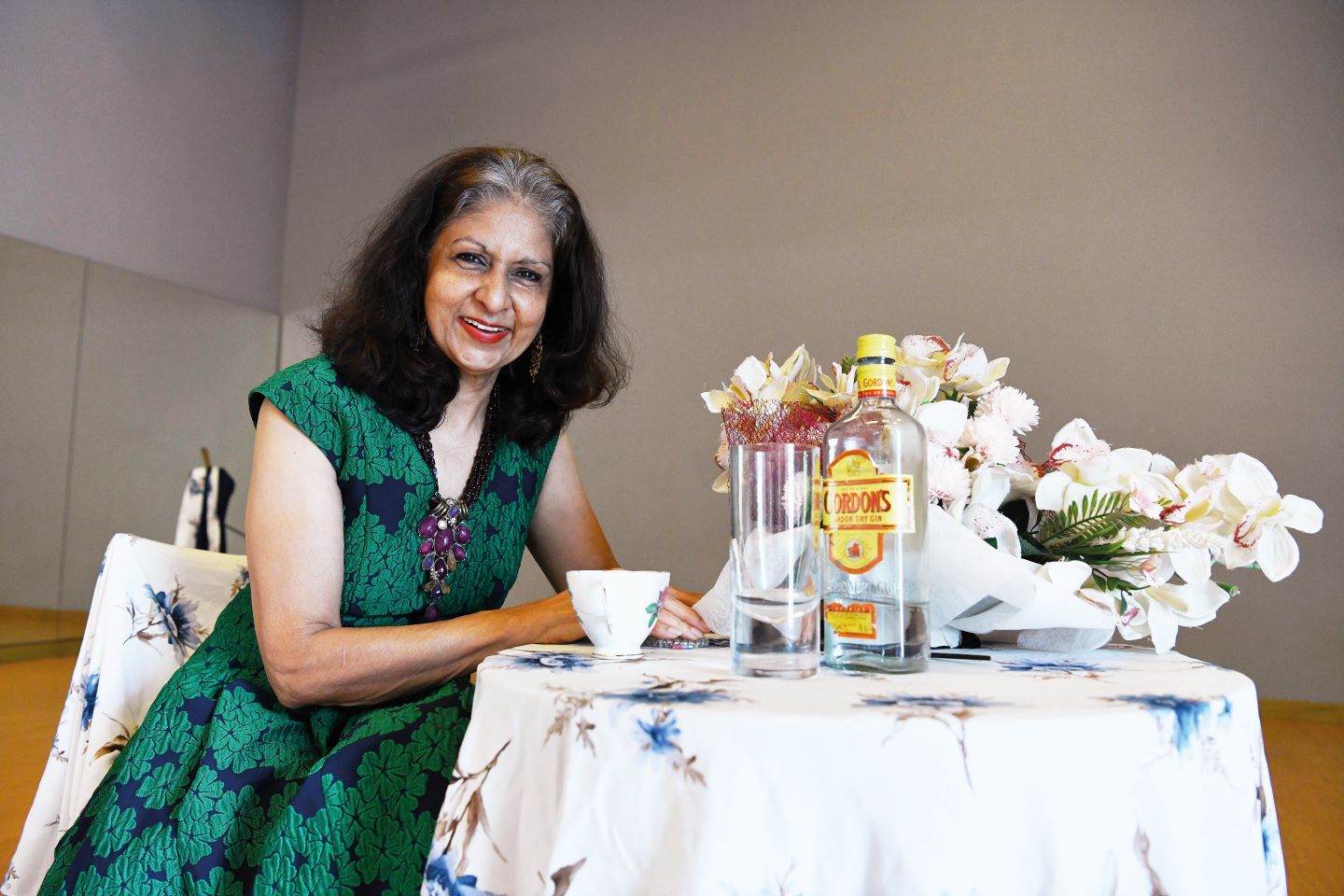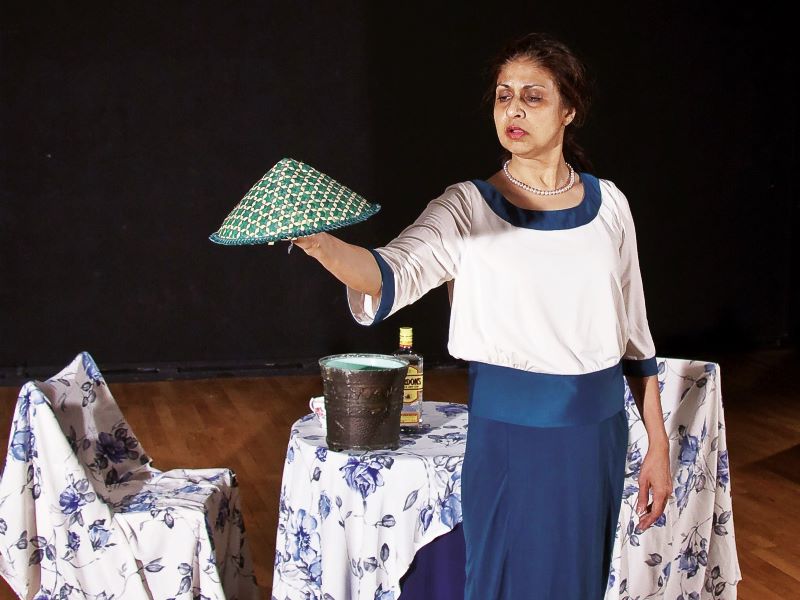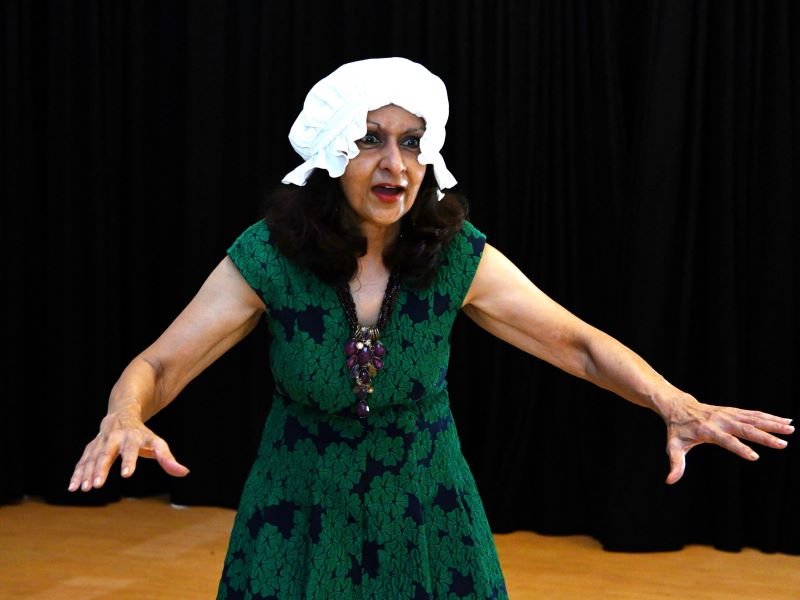
Sabera has portrayed Lady Swettenham 37 times in Malaysia, South Africa, Brazil, Denmark, the UK and India (Photo: Suhaimi Yusuf/The Edge)
Even in an age where colonial is a dirty word, it is hard to refute Sir Frank Swettenham’s influence in shaping the British administration in the Malay peninsula.
Books praise him as someone who “successfully promoted the development of coffee and tobacco estates in the state and helped boost tin earnings by constructing a railway from Kuala Lumpur, capital of Selangor, to the port of Klang”, but very little has been written about his wife, Constance Sydney Holmes.
Every time her story is told, it invariably revolves around her battle with manic depression and confinement in an asylum in England, where she lived until she breathed her last in 1947.
Enter renowned theatre actress Sabera Shaik, Masakini Theatre Company’s driving force. Since her debut performance in 1995 at the Experimental Theatre, University of Malaya, Kuala Lumpur, she has portrayed Lady Swettenham 37 times in Malaysia, South Africa, Brazil, Denmark, the UK and India. Her last performance was in January 2020, at Odin Teatret in the Danish city of Holstebro.
“It’s always a good feeling playing her because I constantly discover new depths. Now that I’m older, and having done it so many times, I’ve noticed that her perspective and the way she expresses things are evolving. The core storyline remains intact but at times, it takes on a darker or lighter tone, depending on my own emotions. Every performance is a unique journey,” Sabera tells Options during a visit to her home in Bukit Tunku, KL, which also houses Studio Ramli Hassan on the ground floor.
Performing Lady Swettenham never gets old for Sabera, as she is influenced by her daily emotions, the music she listens to and her emotional state. “That’s why, in my earlier acting days and even now, I maintain a green room where I clear my mind and meticulously plan my on-stage actions — movements, gestures, lines and every detail,” she explains, before voicing her frustration at how it’s not the case with actors these days.
“It’s crucial to have that downtime by yourself, your quiet time before fully immersing oneself in the character. This preparatory phase typically spans anywhere from 20 minutes to an hour. Before that, I ensure my body and voice are properly warmed up. And usually, as soon as I get into character, I would like to start my performance promptly.” The audience’s punctuality holds significant importance as once she’s ready to go, there is no waiting on her part.
Sabera first encountered the character when she read through Henry Barlow’s book Swettenham in the early 1990s, and although very little was written about the missus, it was enough to pique her curiosity. Time and again, she has revisited this book, and also Frank’s writings, continuously seeking a deeper understanding and uncovering new revelations she might have overlooked.
sabera_1.jpg

What aspects of Lady Swettenham’s character does she find most intriguing?
“She was more than just the wife of a colonial officer and it was the way she was misunderstood … kesian because her husband didn’t have the time to look into her needs. Also medically, they didn’t realise that she was suffering from manic depression. She was just powerless and felt terribly lonely as she got older,” says Sabera.
She was only 19 when she married Frank and the couple travelled to Singapore shortly after their wedding. Initially, she enthusiastically embraced the colonial social scene and relished the perpetual summer in this part of the world. Her passion for playing the piano at the Selangor Club was evident and she even took on the role of designing the Taiping Lake Gardens. Notably, Taman Tasik Perdana was once referred to as Sydney Lake and the quaint road leading to the Royal Lake Club KL bore her name as well.
However, the consequences of her husband’s infidelities and a family history marked by mental illness eventually led to the breakdown of her mind, mettle and marriage.
“She viewed a lot of women with suspicion, believing they had an interest in her husband. Considering the societal norms of the late 1800s, she questioned why a woman would visit another man’s house unaccompanied. Additionally, the challenges of adjusting to the tropical weather and adapting to a new culture, language and way of life may have taken a toll on her,” ruminates the actress.
One aspect Sabera consistently and passionately underscores is the significance of conducting meticulous research and attaining a profound comprehension of her characters prior to assuming the roles. She firmly advocates the need for uncovering “the truth of the matter”.
As she delved into Barlow’s book, she could not help but feel a sense of empathy for Lady Swettenham. “Her life was somewhat tragic and not all hunky dory. Where the British were concerned, we are now just finding out all the horror stories about the colonial past and this is one of the smaller horror stories in a British household. I traced her high points through to the lowest, when she realised that 60 years of her life had been wasted on a man who didn’t really care.”
Take the play as a history lesson, Sabera urges. “I want the audience to learn more about the person I’m playing and our colonial history, which we don’t know much about. Maybe the older generation still do but it’s lost on the young ones. In my own small way, I see myself as a precursor of real history and truth. Just as what I portray and convey on stage resonates with me, I hope to strike a chord with my audience.”
sabera_inside.jpg

She plays 13 characters in this one-hour performance and her priority is to know the young and old Lady Swettenham to get their voices down pat. And she has to meticulously map out the sequence of when the husband, the five English ladies at the club, Perak civil servant Walter McKnight Young or Kassim the houseboy come in. Every character has to have his or her own voice and it is a technique developed and mastered over time.
To build up stamina for the play, Sabera dedicates two hours in the morning and another two in the evening to training. “I’m uncertain if age will be a hindrance, especially considering some of the props are quite heavy, like the blankets. Nevertheless, I’m optimistic I can do it.
“I’ll be wearing the same costume I’ve used since I first began portraying the character. It was designed by my dear friend Shamsu Yusof, one of the go-to fashion designers back in the day, who is now based in Edinburgh, Scotland,” muses the 70-year-old ageless beauty who trained in theatre arts at the Pennsylvania State University in the US, as well as the National Institute of Dramatic Arts in Sydney and Odin Teatret. And, as always, we can expect nothing less than an unparalleled, top-notch performance from her.
'Lady Swettenham' runs from Oct 20 to 22 @ 8pm at Studio Ramli Hassan, 8A Tepian Tunku, Bukit Tunku, Kuala Lumpur. Tickets are priced RM108 and RM30 (students). For bookings, call (019) 282 7827 or visit masakinitheatre.com.my.
This article first appeared on Oct 16, 2023 in The Edge Malaysia.


